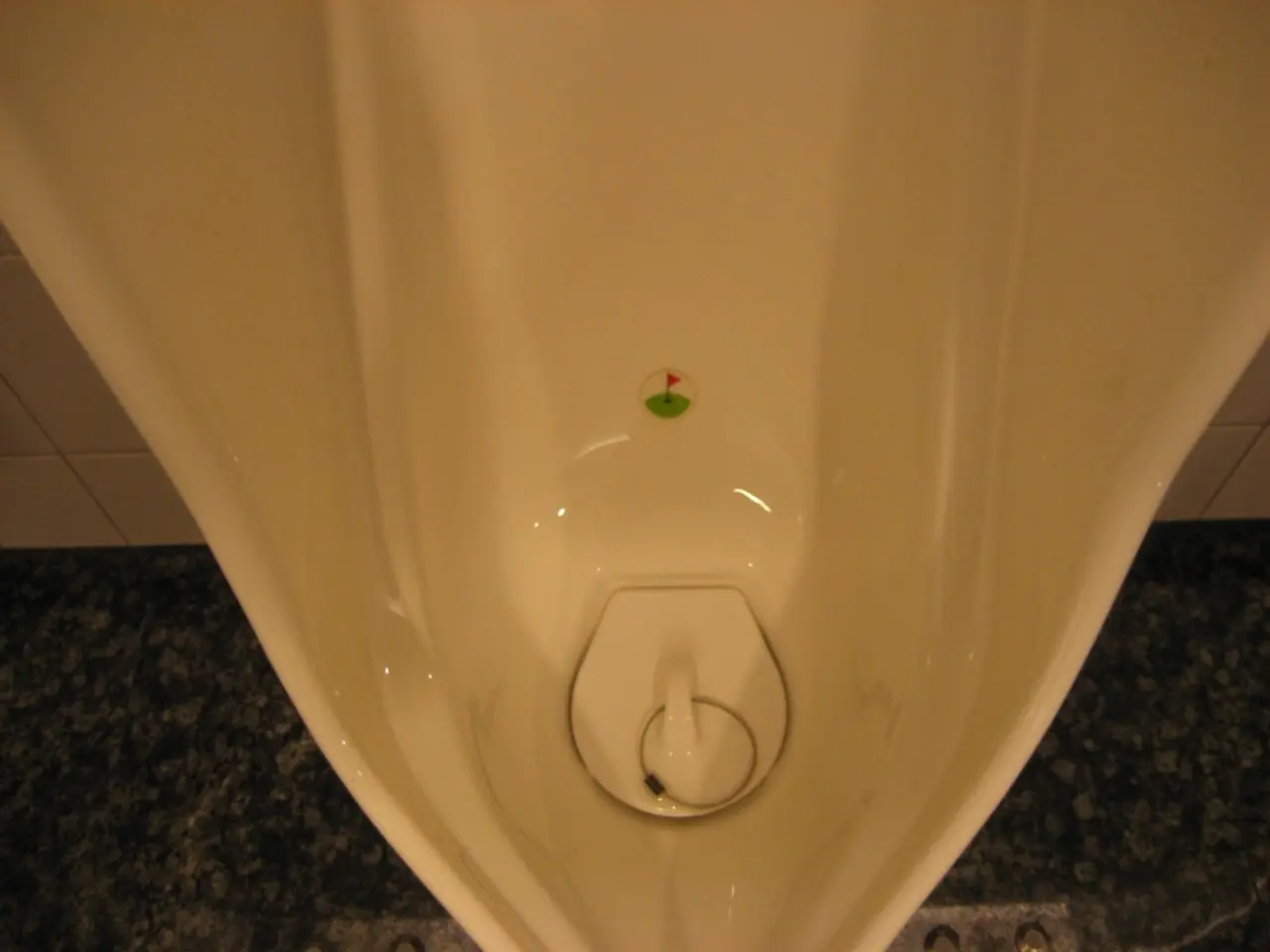Managing a Leaky Bladder: 10 Strategies for Relief
Managing Overactive Bladder: A Comprehensive Guide
An overactive bladder (OAB) can be a troublesome condition, causing frequent and urgent urges to urinate. However, with the right lifestyle changes, it is possible to manage OAB symptoms effectively. Here's a comprehensive guide on how to do so.
Fluid Management
Staying hydrated is essential for maintaining bladder health, but it's crucial to spread fluid intake evenly throughout the day to avoid large amounts close to bedtime. Aim for 6 to 8 glasses of water daily, unless otherwise directed by a doctor. Avoiding large amounts of fluid before bedtime can help reduce nighttime urgency.
Avoiding Bladder Irritants
Limiting or avoiding caffeine, alcohol, carbonated drinks, and artificial sweeteners can help reduce bladder irritation and worsening OAB symptoms.
Pelvic Floor Muscle Strengthening
Performing pelvic floor exercises, also known as Kegels, regularly can help strengthen the muscles that control urination. These exercises involve squeezing and holding the pelvic muscles as if stopping urine flow for several seconds, then releasing. Repeat multiple times daily to strengthen these crucial muscles.
For better guidance, consider consulting a physical therapist specialized in pelvic floor therapy. They can teach proper technique and provide biofeedback to ensure correct muscle engagement. In some cases, vaginal cones may be used as a tool to isolate and strengthen pelvic muscles by holding weighted cones inside the vagina, gradually increasing weight as strength improves.
Bladder Training
Practice bladder training by gradually increasing the time between bathroom visits. This can help retrain the bladder to hold urine longer. Start with short intervals (e.g., 30 minutes or 3 minutes between urinating) and slowly extend the duration.
Maintaining a Healthy Weight
Excess abdominal weight increases pressure on the bladder, worsening symptoms. Moderate weight loss can improve bladder control.
Additional Tips
- Empty your bladder twice before bed (double voiding) if you have nighttime urgency.
- Keep a bladder diary to monitor fluid intake, urination frequency, urgency episodes, and possible triggers. This helps identify personal bladder irritants and track progress.
By consistently applying these lifestyle changes, people with OAB can reduce urgency, frequency, and leakage episodes, improving their daily quality of life. For personalized advice and supervision, consultation with healthcare providers, including urologists or pelvic floor therapists, is recommended.
Other Considerations
- Proper hydration is important for maintaining bladder health. Lowering fluid intake can reduce the amount of urine the bladder can hold, which may mean taking more trips to the bathroom. Inadequate hydration can also lead to constipation, which can lead to straining of the pelvic muscles and adversely affect the bladder muscle.
- Quitting smoking can help reduce some of the symptoms of OAB, including the urgency associated with it.
- Performing pelvic floor exercises like Kegels, squats, and the bridge can help strengthen the muscles around and within the bladder to prevent urinary incontinence.
- Keeping a bladder diary can help determine what foods trigger OAB symptoms.
- The overactive bladder (OAB) is a condition that causes frequent and urgent need to urinate.
- Constipation can adversely affect the bladder muscles and the frequency and severity of OAB symptoms. Eating more fiber, getting regular exercise, staying hydrated, and certain yoga poses can help prevent constipation and promote healthy bowel movements.
- Having excess weight increases the likelihood of developing OAB. Losing weight can decrease the prevalence of urinary incontinence by up to 17% in overweight women or those with obesity.
- In addition to pelvic floor muscle strengthening, other exercises like squats and the bridge can also aid in preventing urinary incontinence.
- Practicing therapies and treatments, such as Kegels, can be beneficial for managing overactive bladder (OAB) symptoms.
- Maintaining a balanced diet rich in fiber, regular exercise, and adequate hydration can prevent constipation and alleviate OAB symptoms.
- A comprehensive guide to managing OAB includes consulting medical professionals like urologists or pelvic floor therapists for personalized advice and supervision.
- Skin care is as important as fitness and exercise in the realm of health and wellness, contributing to overall physical and mental well-being.
- Incorporating CBD into one's wellness routine may yield benefits for various conditions, including chronic diseases and mental health.
- A routine of fitness and exercise, combined with proper nutrition, can contribute to a healthier lifestyle and improved mental health.
- By using therapies and treatments such as Kegels and bladder training, people with OAB can reduce the frequency, urgency, and leakage episodes, leading to an improved quality of life.
- The science of health and wellness extends to various aspects of life, encompassing areas like workplace wellness, mens' health, women's health, sports, and nutrition.




